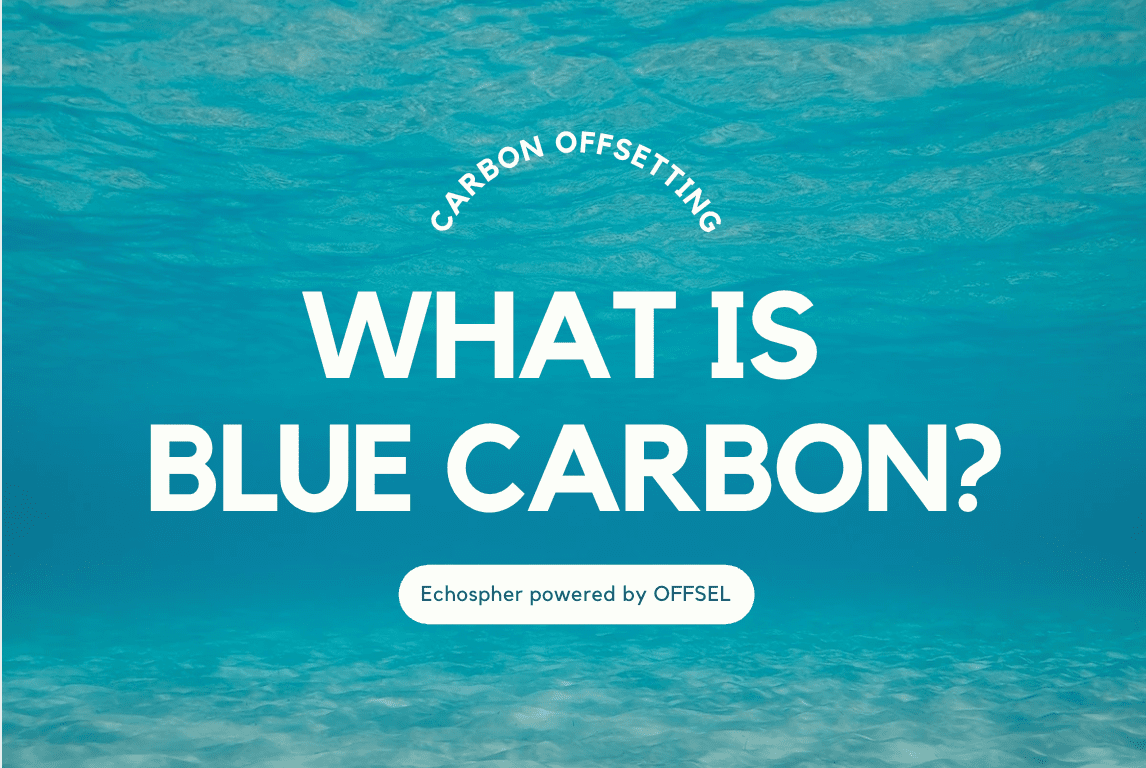Pros And Cons Of Geothermal Energy Generation: How It works?
- CO2-reduction
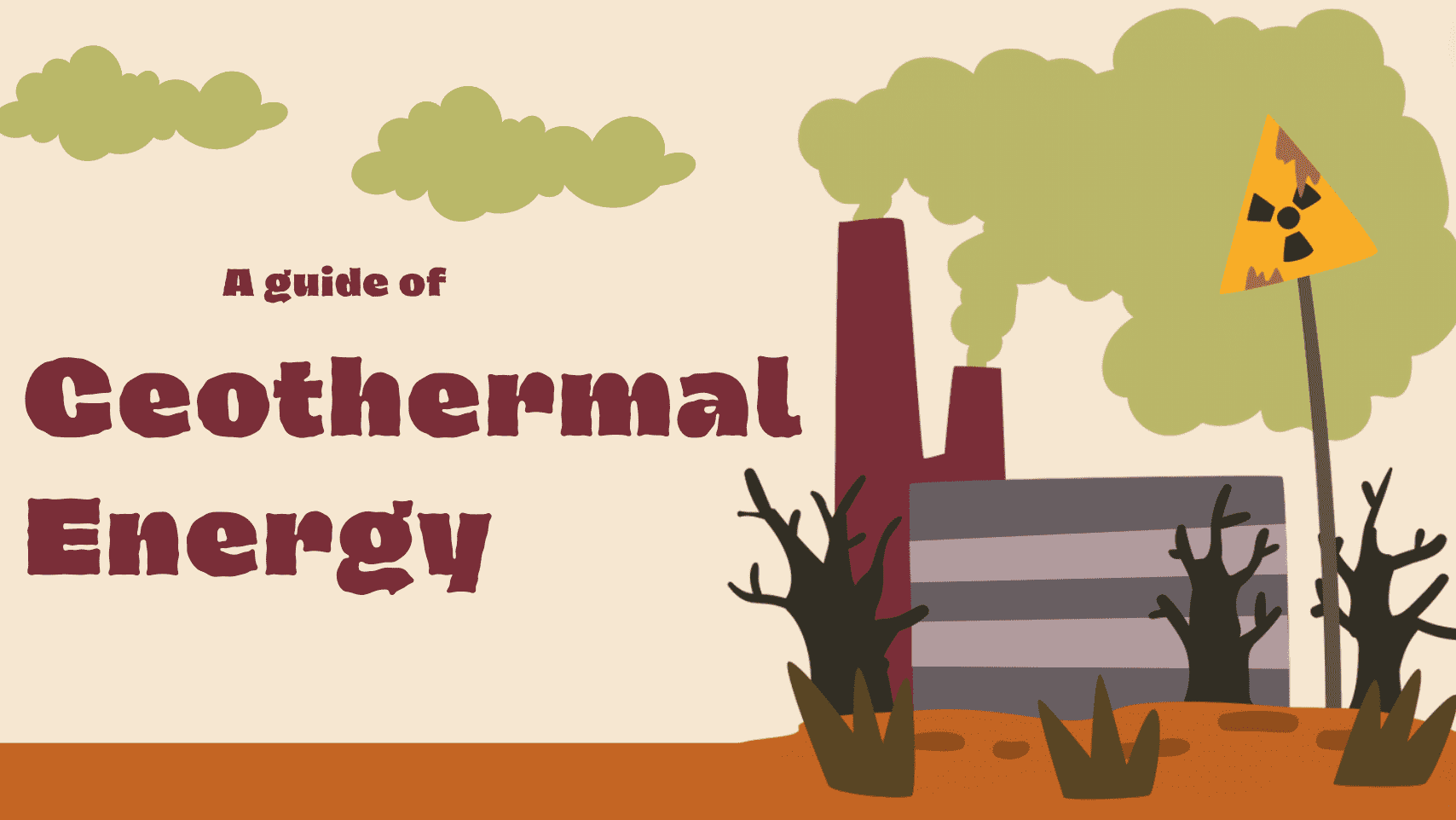
Table of Contents
What is the Geothermal Energy?
“Geothermal” refers to the heat inside the Earth. There are super-hot “magma reservoirs” located several to tens of kilometers underground in volcanic areas. The deep underground heated by this magma heat becomes the “geothermal reservoir.” Geothermal reservoirs mainly exist about 1,000 to 3,000 meters underground.
“Geothermal fluids”, the fluids originating from rain and snow, flow into the geothermal reservoir and transform into high-temperature, high-pressure steam, and hot water.
Geothermal energy utilizes geothermal fluids to generate electricity. To generate electricity, first, wells called “boreholes” are drilled into the geothermal reservoir to pump up the geothermal fluid.
The hot water and steam are separated, with the steam turning turbines connected to generators for electricity production, and this is all mechanisms.
Since the used steam is cooled in a condenser, it reduces its pressure that improves the efficiency of turning the turbines. The cooled and condensed steam becomes warm water, which is further cooled down via a cooling tower and reused as cooling water for condensing the steam.
Types of Geothermal energy and how they work
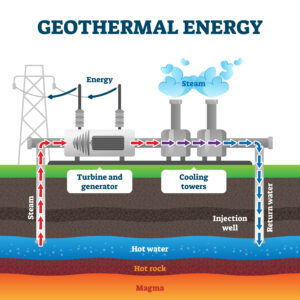
The heat source for geothermal power generation is magma, which exists about 1,000 to 3,000 meters underground.
When it rains, the water is absorbed into the ground and seeps deep underground where the magma flows. This rainwater is heated to high temperatures by the magma’s heat, turning it into what is known as geothermal fluid.
The place where geothermal fluid accumulates is called a geothermal reservoir. In geothermal power generation, the steam from this geothermal fluid is used to turn turbines and extract energy.
There are several methods of geothermal power generation, but “Flash Steam Power Generation” and “Binary Cycle Power Generation” are the main ones. I will explain each of these power generation methods.
Flash Steam Power Generation
In flash steam power generation, wells are drilled into the geothermal reservoir, and geothermal fluid is pumped up. A separator divides the fluid into steam and hot water. The hot water is then returned underground. The steam is used to turn turbines for electricity generation. After generating electricity, the steam is cooled into warm water and reused for cooling the steam.
This is the mechanism of flash steam power generation.
Binary Cycle Power Generation
In binary cycle power generation, geothermal fluid is pumped up from the wells. Fluids with lower boiling points than water, such as pentane or alternative Freon (secondary medium), are heated and vaporized by the geothermal fluid.
Unlike flash steam generation, the steam of the secondary medium is used to rotate the turbines. After generating electricity, the secondary medium is returned to a liquid state and sent back to the evaporator through a circulation pump. Flash steam generation is suitable for generating electricity with high-temperature geothermal fluids above 200°C at the surface.
In contrast, binary cycle generation is suitable for generating electricity with low-temperature geothermal fluids and can effectively utilize heat sources such as hot springs.
The advantages of geothermal energy
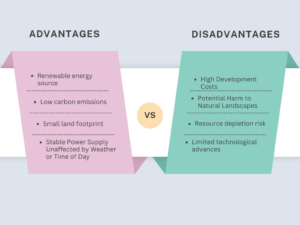
CO2 Emission is low
Geothermal energy has lower CO2 emissions than other options. Even with CO2 generation from the construction to the operation of the power plants, geothermal energy emits less CO2 compared to solar and wind. It’s highly effective as a renewable energy source in aiming for decarbonization.
Stable Power Supply Unaffected by Weather or Time of Day
Geothermal energy generation, which utilizes the heat from underground, is not affected by weather conditions, seasons, or time of day, unlike other renewable energies like solar and wind power.Also, energy supply is stable as there’s no concern of resource depletion.
Sustainable Energy
Geothermal energy is considered as a long-term supply as it does not cause resource
depletion like fossil fuels. Since Japan had high demand for energy during the economic growth, oil imports increased. 58.1% of energy came mainly from domestic natural resources like coal and hydropower in 1960, however, the energy self-sufficiency rate dropped after that.
For the low energy self-sufficient countries, it is beneficial to own renewable energy sources.
Many countries with limited natural resources utilize geothermal energy as a valuable energy resource.
The disadvantages of geothermal energy generation
High Development Costs
The significant time and expense involved in the development of geothermal energy are major disadvantages. The first step to build a geothermal power plant is surveys.Since it utilizes heat sources deep underground, drilling operations are also required for these investigations, each incurring substantial costs.
Additionally, even after development, the state of the steam may not always yield the expected power generation, posing a higher risk of uncertainty compared to other renewable energies.
Potential Harm to Natural Landscapes
The land that serves as a heat source for geothermal energy often exists in national/public parks and hot spring areas. However, constructing geothermal energy facilities in these tourist destinations could harm the landscape. Development in national/public parks is legally restricted, making the construction of power facilities even more challenging.
In a hot spring area, it is essential to negotiate with locals to gain support. Geothermal power development requires consideration of both tourism and natural conservation.
Low Generation Efficiency
Another disadvantage is the low energy generation efficiency of geothermal power. It means that the ratio of fuel energy used for power generation converted into electricity is low. The generation efficiency of wind is approximately 8%, however, geothermal energy has only 8% ratio.
Examples of Geothermal Energy Generation Around the World
Despite being gradual, the adoption of geothermal energy is increasing. Here, we will introduce examples of binary cycle geothermal energy plants, recognized as a new energy source.
Sarulla Geothermal Power Plant (Indonesia)
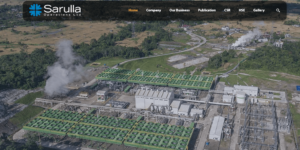
Sarulla Geothermal Power Plant is located in the northern Sumatra Island in Indonesia, and its power output is about 330 megawatts.The generated electricity is wholesaled to the state-owned electricity company of Indonesia.
Indonesia is a “geothermal resource country” with large geothermal sources in the world. The government introduced the strategy for its energy sector emphasizing diversification and expanded capacity from 1.86 million kilowatts to 2.13 million kilowatts between 2013 and 2019.
Ngatamariki Geothermal Power Station (New Zealand)
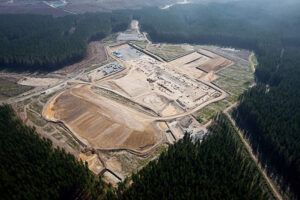
Ngatamariki Geothermal Power Station is in the north Island of New Zealand and is an 82-megawatt facility.
Owned by the state-owned power company Mighty River Power, the station uses three geothermal wells and pentane as a medium. It has enough storage capacity to power 80,000 households.
In New Zealand, developers often collaborate with Maori landowners and Maori trusts that invest in these projects. The Ngatamariki station has also formed a partnership with a Maori trust. It is essential to build a good relationship with them for improving geothermal energy.
Olkaria III Geothermal Power Plant (Kenya)
Olkaria Ⅲ Geothermal Power Plant is in the northwest of Kenya’s capital Nairobi. It has a capacity of production to 150 Megawatts. This area is known for several energy plants that utilize geothermal energy from the Olkaria volcanic system, representing a significant geothermal zone in Kenya.
The 80 square kilometers of land for several geothermal energy plants, including Olkaria III, is designated as part of Hell’s Gate National Park, a savannah, and it is also known as a wildlife habitat.
Hatchobaru Binary Power Plant (Oita Prefecture, Japan)
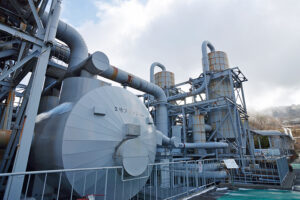
The Hatchobaru Binary Power Plant is in the southwestern part of Oita Prefecture, surrounded by the mountains of Aso Kuju National Park and Yaba Hita Hiko Mountain Quasi-National Park. It is a 2-megawatts facility. Nearby, there are two flash-type power generation units.
The combined output of the two flash-type units and the Hatchobaru Binary Power Plant is 110 megawatts, making it the largest geothermal energy generation facility in Japan. The annual energy generation is approximately 80,000 megawatt-hours that saves equivalent to 200,000 kiloliters of oil.
You May Interested In:
The Pros And Cons of Solar Energy: Current Situation In The World
What Is The Energy Mix? Definition And Current Situation Of The World
CONTACT US
Please feel free to contact us at anytime.
We will get back to you as soon as we
can!
Editor
OFFSEL Owned by Erevista Inc, OFFSEL is specializes in Environmental issues, especially in carbon neutrality. We primarily provide the latest information on environmental energy.



